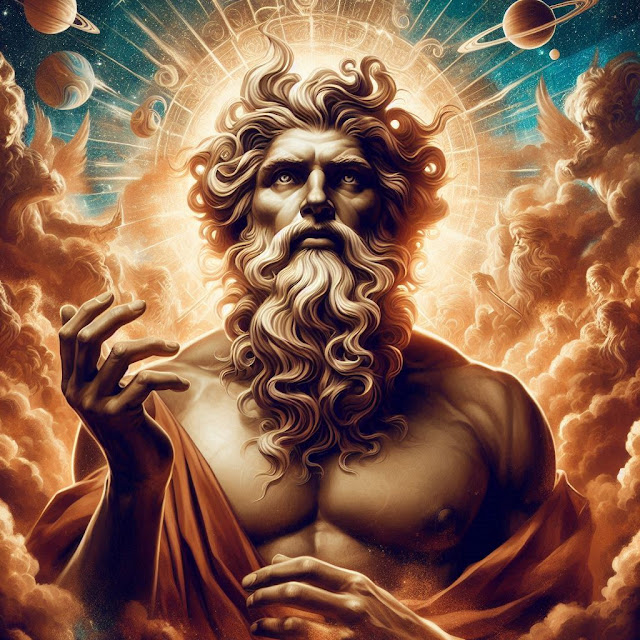Throughout human history, the sky has often been imagined as the dwelling place of gods — a realm of light, vastness, and transcendence. Among the earliest expressions of this idea is found in ancient Hinduism, where Dyaus stands as a primordial sky god, later believed to incarnate as Bhishma, the noble and steadfast warrior from the Indian epic Mahabharata. Bhishma, celebrated for his unwavering devotion and moral strength, embodies the virtues commonly attributed to divine origins.
The Romanian historian of religion Mircea Eliade highlights the deep linguistic and conceptual connections between the Indo-European noun deiwos — meaning “sky” or “celestial” — and various terms for deity across related cultures. This shared linguistic heritage appears in Latin deus, Sanskrit deva, Avestan/Iranian daeva (later carrying a negative connotation in Zoroastrianism), as well as in the names of major sky gods: the Vedic Dyaus, Greek Zeus, and Roman Jupiter.
Eliade, along with religious scholar Geoffrey Parrinder, points out that the concept of divinity in many ancient religions is closely linked to transcendence, light, and often fatherhood — themes which not only evoke the physical heavens but also symbolize moral and spiritual elevation. This paternal aspect can be seen not only in Christianity’s God “the Father,” but also in non-Christian traditions where fatherly sky deities appear frequently.
Examples of this paternal sky-god archetype include the Sanskrit Dyauspitar (“Sky Father”), the Greek Zeus Pater (Ζεύς πατήρ), the Latin Jupiter (from Iuppiter, derived from Dyeu-pater meaning “Father Sky”), the Scythian Zeus-Papaios, and the Thraco-Phrygian Zeus-Pappos. These figures reflect an enduring human tendency to associate the vast, illuminating sky with divine authority, protection, and generative power.
From ancient India to Greece and Rome, the motif of a paternal sky god underscores the shared spiritual heritage of Indo-European civilizations. This archetype not only connects languages and myths but also reveals how early Indo-European cultures often envisioned divine fatherhood as a symbol of protection and cosmic order. However, across the wider world’s mythology, the sky has sometimes been personified as female — reminding us that humanity’s interpretations of the heavens are as diverse as its languages and landscapes.
 |
| The Egyptian Nut swallows the Sun, which travels through her body at night to be reborn at dawn |


Comments